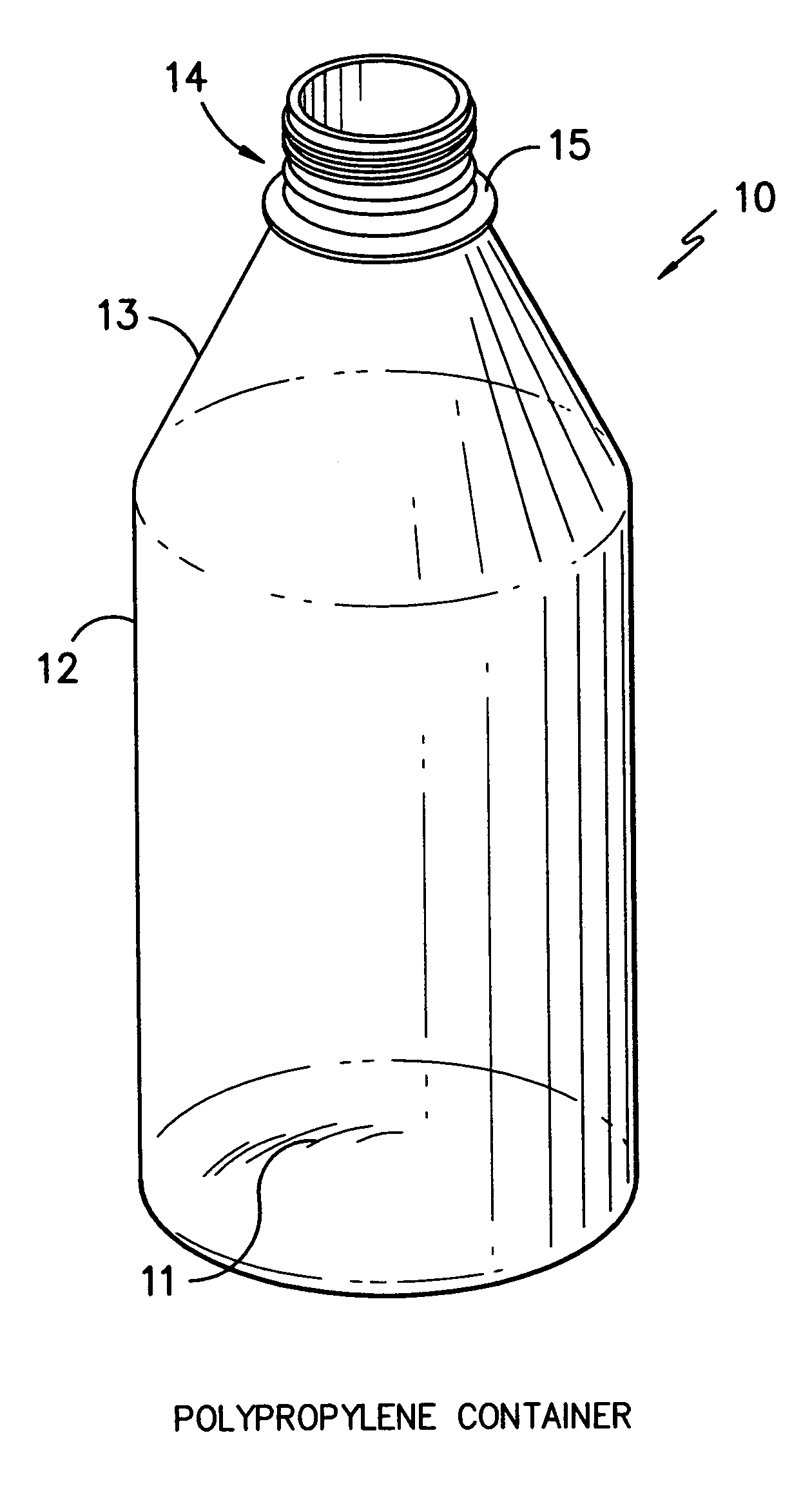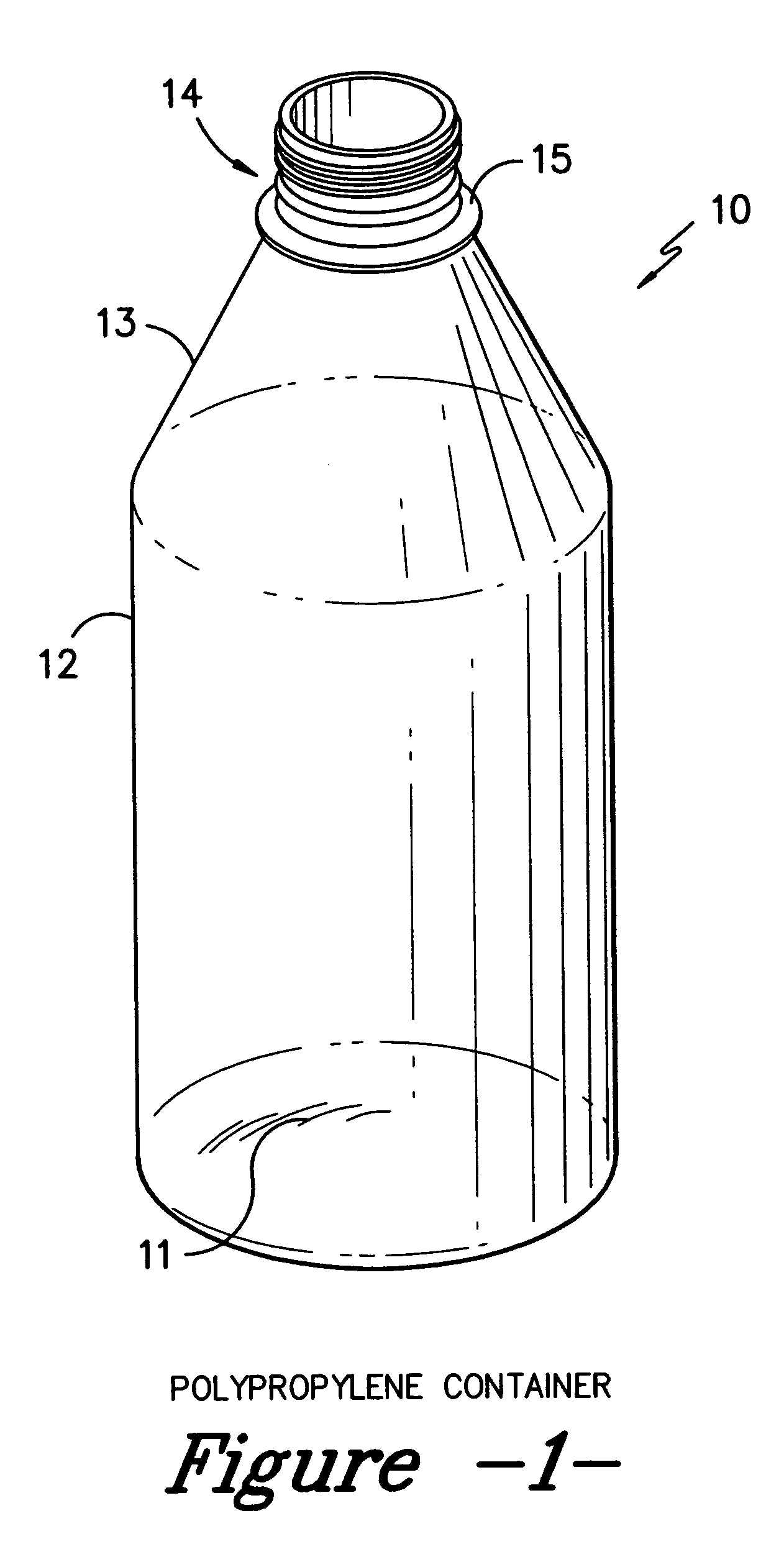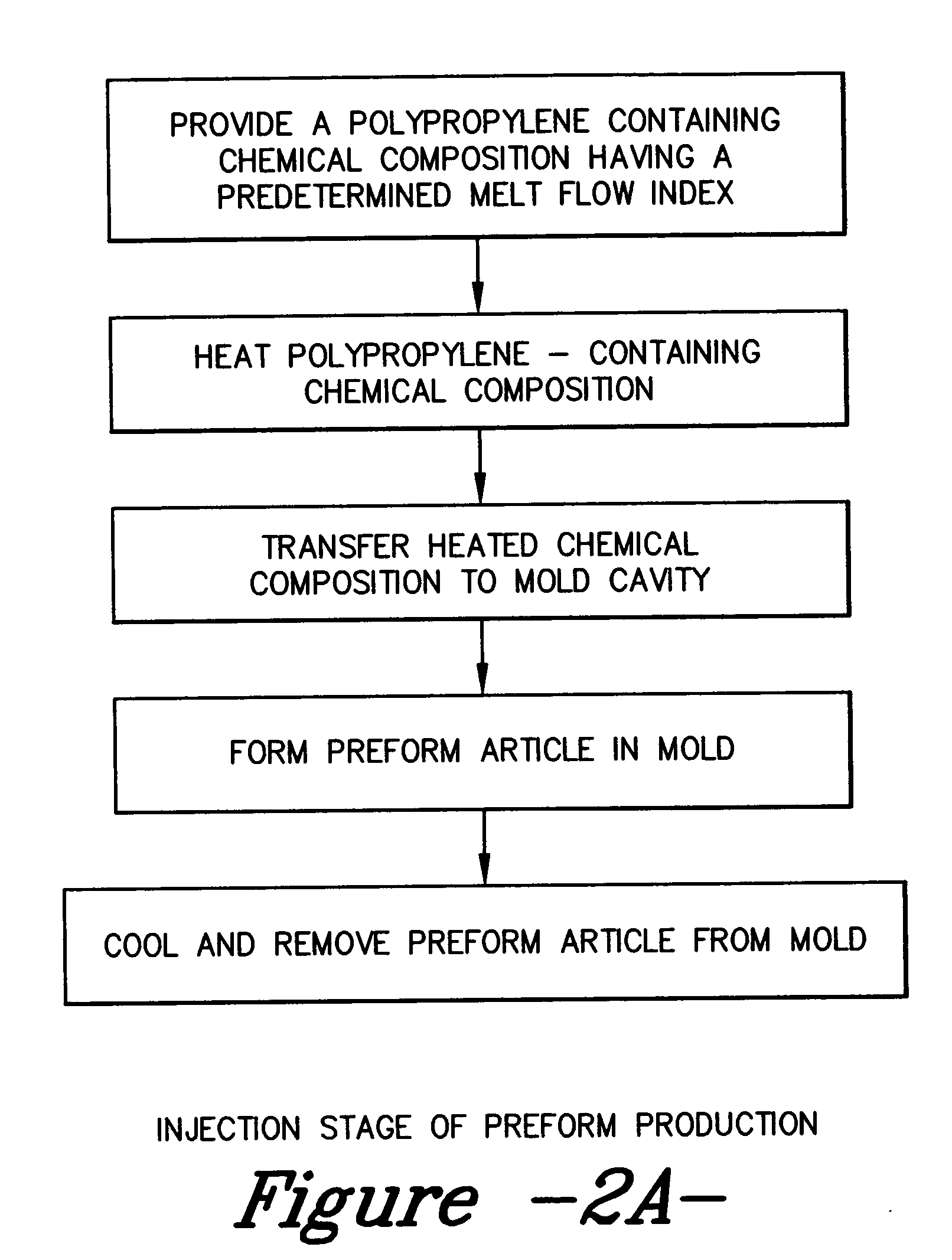Process of making preform articles and polypropylene molded containers from preform articles using injection stretch blow molding techniques
a technology of injection stretch blow molding and preform articles, which is applied in the field of making preform articles and polypropylene molded containers from preform articles using, and can solve the problems of large size and compactness, large volume of preform containers, and insignificant replacement of polypropylen
- Summary
- Abstract
- Description
- Claims
- Application Information
AI Technical Summary
Problems solved by technology
Method used
Image
Examples
example 1
38 mm Neck, 4 mm Wall Preforms
[0104] Commercial random copolymer resins containing Millad 3988 (Borealis) were used to produce preforms as indicated in Table I. The preforms were produced on a two-cavity mold (only one cavity installed) 100 ton Netstal injection molding machine with a variable injection time (0.5-4.0 sec) and a constant cooling time of 22 sec. Melt temperature was 230° C. Temperature of the cooling water was 13° C. The holding pressure time was 9.2 sec. Total cycle time was around 37 sec (not optimized). A valve gate with a diameter of 1.5 mm was used. The preforms have a wall thickness of 4 mm and a bottle weight of about 25.3 g. These preforms were later blown into bottles as explained in subsequent examples.
TABLE IExample 1 PreformsMFIInjectionInjection(g / 10TimeSpeedExampleResinsec)(sec)(g / sec)I-1RB307MO1.50.550.6I-2RB307MO1.51.025.3I-3RB307MO1.51.516.9I-4RB307MO1.52.012.7I-5RB307MO1.52.510.1I-6RB307MO1.53.08.4I-7RB307MO1.53.57.2I-8RB307MO1.54.06.3I-9RE420MO13...
example 2
38 mm Neck, 3 mm Wall Performs
[0105] Commercial random copolymer resins containing Millad 3988 (Borealis) were used to produce preforms as indicated in Table II. The preforms were produced on a two-cavity mold (only one cavity installed) 100 ton Netstal injection molding machine with a variable injection time (0.5-4.0 sec) and a constant cooling time of 10 sec. Melt temperature was 230° C. Temperature of the cooling water was 13° C. The holding pressure time was 4.5 sec. Total cycle time was around 20 sec (not optimized). A valve gate with a diameter of 1.5 mm was used. The preforms have a wall thickness of 3 mm and a bottle weight of about 20.3 g. These preforms were later blown into bottles as explained in subsequent examples.
TABLE IIExample 2 PreformsMFIInjectionInjection(g / 10TimeSpeedExampleResinsec)(sec)(g / sec)II-1RB307MO1.50.540.6II-2RB307MO1.51.020.3II-3RB307MO1.51.513.5II-4RB307MO1.52.010.2II-5RB307MO1.52.58.1II-6RB307MO1.53.06.8II-7RB307MO1.53.55.8II-8RB307MO1.54.05.1II-...
example 3
38 mm Neck, 2 mm Wall Preforms
[0106] Commercial random copolymer resins containing Millad 3988 (Borealis) were used to produce preforms as indicated in Table ll. The preforms were produced on a two-cavity mold (only one cavity installed) 100 ton Netstal injection molding machine with a variable injection time (0.5-4.0 sec) and a constant cooling time of 10 sec. Melt temperature was 230° C. Temperature of the cooling water was 13° C. The holding pressure time was 2 sec. Total cycle time was around 20 sec (not optimized). A valve gate with a diameter of 1.5 mm was used. The preforms have a wall thickness of 2 mm and a bottle weight of about 17.3 g. These preforms were later blown into bottles as explained in subsequent examples.
TABLE IIIExample 3 PreformsMFIInjectionInjection(g / 10TimeSpeedExampleResinsec)(sec)(g / sec)III-1RB307MO1.50.534.6III-2RB307MO1.51.017.3III-3RB307MO1.51.511.5III-4RB307MO1.52.010.2III-5RB307MO1.52.56.9III-6RB307MO1.53.05.8III-7RB307MO1.53.54.9III-8RB307MO1.54....
PUM
| Property | Measurement | Unit |
|---|---|---|
| diameter | aaaaa | aaaaa |
| thickness | aaaaa | aaaaa |
| thickness | aaaaa | aaaaa |
Abstract
Description
Claims
Application Information
 Login to View More
Login to View More - R&D
- Intellectual Property
- Life Sciences
- Materials
- Tech Scout
- Unparalleled Data Quality
- Higher Quality Content
- 60% Fewer Hallucinations
Browse by: Latest US Patents, China's latest patents, Technical Efficacy Thesaurus, Application Domain, Technology Topic, Popular Technical Reports.
© 2025 PatSnap. All rights reserved.Legal|Privacy policy|Modern Slavery Act Transparency Statement|Sitemap|About US| Contact US: help@patsnap.com



